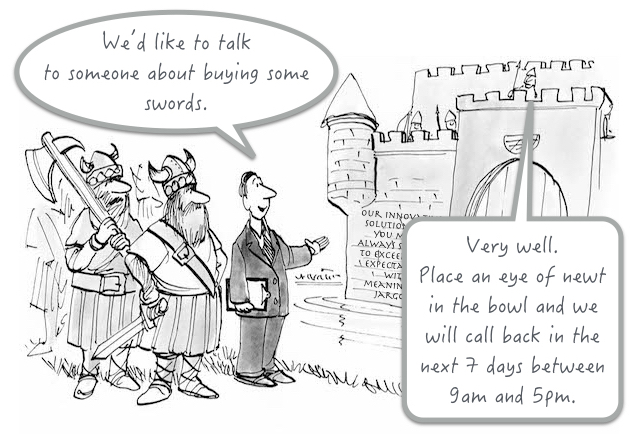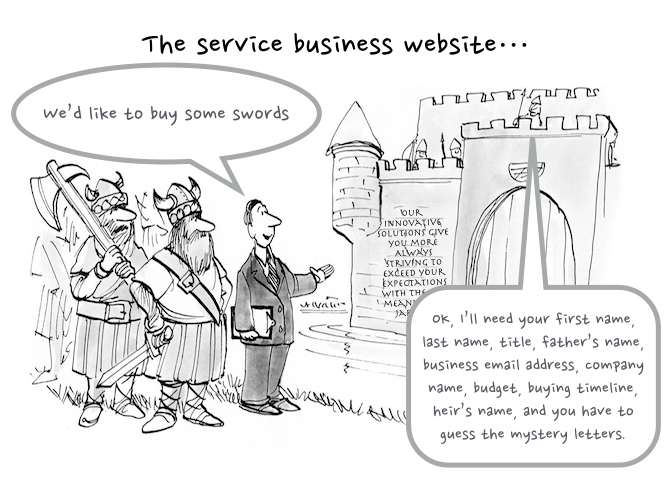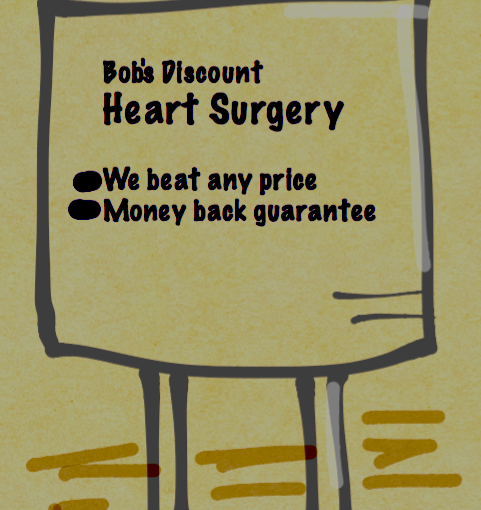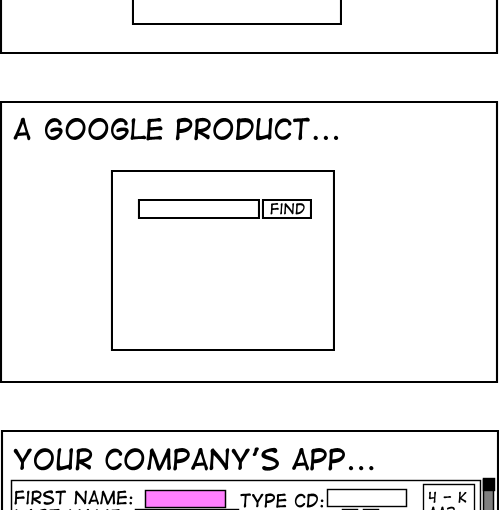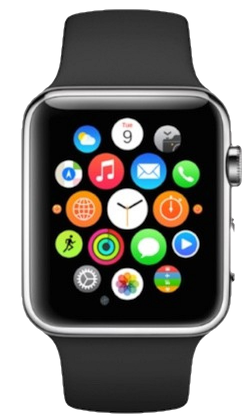If you’re doing something that upsets your customers and prospects, whether it’s changing prices, revising a service plan, or removing the universal audio port in favor of a proprietary standard, don’t insist on giving yourselves credit for “courage” in front of your customers. Certainly, explain your reason(s), and don’t feel obliged to share everything, but even Apple can’t pull this off properly. (In fairness to Schiller, he was trying to paraphrase Steve Jobs, who put it more eloquently– not just “having courage”, but having “the courage of our convictions” and “being willing to take the heat”.)
Author: Reuben Swartz
Why Prospects Think You Hate Talking to Them
When you find a prospect who actually wants to talk to you, do you actually get the conversation? Or do you make it look like you hate talking to prospects?
If you don’t do a good job of reaching your leads, you’ll need 60X more of them. That’s expensive. Talk to people who want to talk to you. Make it a priority.
How Terminator Really Happens
Fortifying your website against your customers?
Most people who have services websites look they are guarding against their customers coming over the drawbridge, not welcoming them in.
Why companies make it hard for their prospects, and how you can make it easier…
Bob’s Discount Heart Surgery
No one wants to go to Bob for heart surgery. But a lot of people run their businesses like Bob.
Here’s how to avoid, when possible, and win, when necessary, price competition.
K.I.S.S.
Here’s a great drawing from Eric Burke (who’s site seems to be down, or I’d link there.):
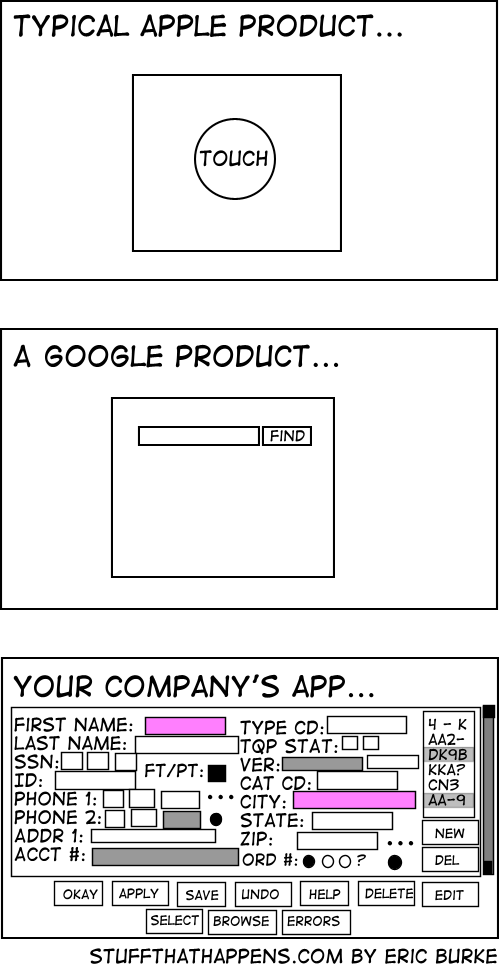
Aside from being funny, this says a lot about not just products, but sales. “Your Company’s App” is complicated not because someone wants to make it complicated, but because the requirements are complicated. Sometimes, this is just because some things are complex. Often, it’s because people didn’t have clarity about the mission. Usually, it’s a combination of these factors.
When you’re an engineer doing sales and marketing, it’s easy to get sucked into the technical details. After all, you’re better at this stuff than most of the other folks in sales and marketing. Before you realize it, your sales cycle looks like the “Your Company’s App.” Too many details without clarity. The details are great, but they should come from a clear view of the overall mission.
I see too many proposals that have 10 pages of techno-jargon and no sense of what the prospect wants to accomplish, how they will measure success, or whether the vendor will be able to claim success.
Think of your sales efforts like the Google and Apple products– very simple to understand and achieve the goal, with a lot of hard work behind the scenes.
As they say, Keep It Simple, Stupid. 😉
Networking for Nerds
Of all the uncomfortable sales and marketing activities you suddenly have to handle, networking is probably the least favorite for introverts. Trying to make small talk is painful. You know some people can “work a room” without apparent effort, but that’s not you.
Here are some tips to make the experience more fun and more productive.
- Know why you’re there. It’s not just to eat lunch or make sales. (More on that in a moment.) Are you there to find contacts for your pipeline? To hire employees? Meet experts who can help you with key business tasks? Meet people who have expertise you want to gain? Knowing the purpose lets you target the right events. If you’re targeting prospects, visiting with your peers may not be helpful. But if you need expertise and a sounding board, your peers will be more useful than your customers.
- Don’t try to sell. The power of the network grows exponentially with its members. If you try to sell everyone you meet, you’ll not only not make (m)any sales, you’ll shut down sales to those peoples’ networks, which is where the real opportunity is.
- Meet people, not opportunities. Don’t treat people just as dollar signs. If there was no business involved– say you’re at your kid’s soccer game, talking to other parents– you’ll establish a human connection, not an economic connection. Do the same thing at business networking events. Of course, the central topic of conversation may be business, instead of excessive homework, but talk to people like people. Ask people about themselves. Be interested. Not just “what do you do?”, but “this may be a silly question, but is that like X?” or “Why does someone hire you instead of doing it themselves/using popular alternative/etc?” Ask questions to get a real understand of who they are and how their business works. People love to talk about this stuff, and I always learn more by listening than by talking.
- Offer to help. When you make a connection with someone you like, ask who is their ideal customer? If you know someone who is struggling with the problem they solve, offer to introduce them. (Depending on how comfortable you are, you can always ask the person already in your network if they want the introduction. If they do, obviously make the introduction. If not, just explain that the timing or the fit isn’t as good as you thought. The new contact will still appreciate that you tried.) Often, people are not good at describing their ideal customer. I have met people who say “any business” or “anyone with a website”, and stubbornly resist my attempts to get more specific. Unfortunately, these people don’t get introductions, because I am not confident in their ability to help people more than anyone else in the market. But if they say, “we help dentists get more patients from their websites”, then I know who might be a good fit, and I have a good reason to make an introduction to dentists. (The flip side of this is that people will often ask you the same question, and you should be ready with a very crisp answer.) Beyond introductions, if there’s something simple that you can do without cost, offer to do that. (Maybe you can’t optimize the dentist’s website, but you can offer to take a look at it and make some suggestions.) Keep in mind that the people who will be most eager to get your free help may be the least likely to pay you to actually solve their problems. It’s up to you have a way to be helpful that doesn’t take too much time.
- Follow up. So many good opportunities die because people get busy. If you’re organized and disciplined about following up, you can get much more out of networking than the people who work the room and collect all the cards and never follow up. I’ve had opportunities materialize years after meeting people, because I stayed in touch with people, because I introduced people, because I tried to be helpful. Don’t think of the goal as “get X business cards at this event”, but instead, “make X introductions over the next 3 months based on people I meet at this event.”
Networking is a long game. Don’t be one of those people who thrusts business cards at everyone they meet and doesn’t make a single actual connection. Be helpful to the network, and let the network work for you. You’ll take a lot of pressure off yourself and a lot of awkwardness out of the events. You’ll have more fun, and, before you know it, get more business.
What traits does it really take to sell?
Picture a sales rep in your mind. What traits do you see? Someone confident, maybe even brash, maybe even with questionable honesty. Whether this is a fair stereotype, we all know it.
For a lot of people coming from technical backgrounds into sales, this is a problem. We may not think we fit the mold for sales success.
So, how well does the stereotype correlate with sales results?
Mark Roberge, Chief Revenue Officer at Hubspot came to Austin recently and talked about how they built a scalable, predictable revenue engine. They used metrics to figure out what worked for and what attributes they should look for in sales reps. What did they find?
The “traditional” sales skills– closing, objection handling, and pushiness, correlated negatively with results. What did correlate with success? The number one factor was coach-ability. Curiosity and conscientiousness also helped a lot. This doesn’t sound like such a personality mismatch now, does it?
(Roberge notes that different situations may call for different characteristics. His point is that you want a process for figuring out what those characteristics are for your organization. My point is that in many cases, what leads to success is actually what you have, and not what you think of as the stereotypical sales profile.
What to make of the Apple Watch
One year in, the Apple Watch business is probably as big (bigger?) than Rolex. It’s also a flop, according to many folks. I don’t have one and don’t want one. (I haven’t worn a watch since I had kids. I didn’t want the clasp to hurt them when I held them. I haven’t missed it.) But when Apple put so much attention into the watch project, I was curious to see what they would create.
I’ve played with the device a few times at the Apple store, wondering what I was missing. Unfortunately, rather than make me realize what I was missing, I could barely figure out how to work the thing. When Apple wanted to pay homage to watches of old, I don’t think they meant the part where you try to hit all the buttons in different orders to see how to adjust the hour for daylight savings time, or figure out if your alarm was set. But that’s what it feels like. Unlike the intuitive, simple interface of the iPhone and iPad, I have to know which button to push, or which part of the screen to touch, or maybe I need to turn that world’s tiniest scroll wheel. And depending on what I’m doing (if I actually manage to launch an app), those actions cause different things to happen. Sure, I didn’t spend that long trying, but I’ve tried several times, and apparently this problem doesn’t go away even if you own one.
In the watch world, “complications” are a good thing. For most people, they’re a bad thing. I think Apple tried to do too much. They launched the iPhone without 3rd party apps (and rightly fixed that, later). They could have made a great watch, a great fitness device, and a great notification device. (I haven’t experienced notifications, but people who actually like their Apple Watches tell me that subtle notifications are the best part.) The could have let notifications from apps on the phone go to the watch without those third party apps running on the watch (for now). (I also expected the interface to be more like the old iPod, being able to use touch on the sides of the bezel, without having the thickness and energy needs of a touchscreen, but what do I know about this stuff. I also thought that you’d be able to configure a few wrist motions to make it easy to do some key things without using your other hand.)
Anyone have a watch from Apple or other “wearable” competitor? What do you think?
Moving into Sales? Don’t Panic (Here’s How)
When you have a technical background (and a technical mindset) and you have to go on your first sales call, there’s a natural tendency to panic. Some people avoid this by having no idea what they don’t know, so they don’t panic until later, when they realize they’ve screwed up chances to make lots of money and work on interesting things.
While panic is an useful mechanism to remind you to take step back and take a deep breath, it’s not a good response in a sales situation. (Or any other situation, really.)
Of course, that’s easy to say, but panic is sometimes hard to avoid. I was on an early morning flight to meet with a prospect that a partner had arranged. This was a great opportunity, but the partner had been guarded about the details. It sounded like something we could help with, but I wasn’t sure what to expect. The thing I didn’t want to do was fly across the country for nothing (especially on a 6am flight). But the uncertainty was making me nervous.
As I sipped on my coffee, I looked down at my crisp white shirt and made a mental note to not spill coffee on it. As I finished my coffee, I looked down at my shirt. I had somehow spilled not a drop, but an oil spill’s worth all over my formerly clean white shirt.
Panic set in. Then, I took some deep breaths. (This is probably the most important physiological thing you can do.) Surely, I’m not the only klutz who’s spilled coffee on his shirt before a meeting, right? Right?
When I got off the plane, I found one of those overpriced stores that sells clothes to people who spilled coffee on their shirts. I paid the price, which I would never have done under normal circumstances, and went to my meeting.
We were in a big conference room where the table was big enough to have a gap in the middle. Lots of people were there. That was good, in a way, because it meant that this was important. It was also bad, because I’m introverted, and a much prefer a direct discussion with 1-2 people than a presentation with 8-10 people, who I can’t possibly know well.
Fortunately, the prospect had a problem that they wanted to talk about. I was interested in learning about it, and thinking about how to solve it. I thought about a mental trick I developed to help me deal with situations like this. How would I handle this if these people were friend’s of a friend? (Which in a way they were, as they were close with the partner.) How would I act if there was no money involved, someone just wanted some help with something? Suddenly, it doesn’t feel like “sales”. The awkwardness is gone, and I could just try to be helpful.
The day went well, and we ended up with a six-figure deal. And I didn’t spill anything on my shirt on the way home.
Don’t panic. Just be helpful.
(For tips on how to make 3 essential mindset shifts when moving from a tech role into sales, click the big green button in the sidebar.)
